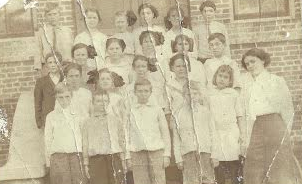Back when life around our house was still caught up in the frenzy of high school, our daughter competed in speech and debate events. My husband and I, as dutiful parents, thus fulfilled our required corollary role as judges for tournaments.
One of the categories in high school speech—at least in our league—was known, for short, as Interp. This was the event in which each contestant was required to select a passage from a piece of literature and edit it in such a way as to represent its essence in an abbreviated performance of only ten minutes duration. The edited version had to provide introduction of characters and setting, as well as allow for character and plot development and resolution. Not only that, but it permitted no props or costumes. And it all had to be performed by one actor. That's right: that one lone student who edited the piece also had to become hero, bad guy, innocent bystanders, and all the sound effects, all wrapped up in a one man—or woman—show.
The idea behind the exercise was to get students to exercise their editing skills as well as their thespian talents. And, of course, provide a sly way for educators to introduce literature to students through practical exercises and competition. Generally, in judging rounds of Interp, we would be treated to a wide variety of fictional works by well known authors—stories which would be considered the classics.
That pleasant expectation was all to be overturned by the arrival of one novice competitor one year, who took the rules of the game quite literally—well, at least in the doing of the editing process. Somehow, he missed the concept of fine literature. His Interp selection was for a much smaller piece. Entering into this complex theater of the mind, this newbie had the temerity to present the story known far and wide since 1960 as Are You My Mother?
Why, yes, the book has since been recognized by placement on two "Top 100" lists for children's books. But that doesn't really matter to me. What matters was the monotonous delivery, for ten unending minutes, of the inane story of a misplaced hatchling trying to reunite with its missing mother.
I'm sure it's quite endearing to youthful ears.
Keep in mind there is likely a reason why parents don't mind reading aloud to their offspring stories coming from the pen of time-honored authors such as J. M. Barrie. That reason is somehow strangely missing when a parent cracks open the cover of Are You My Mother?
You are probably wondering why this rant has found its way into a family history blog. Be patient. I'll tell you.
Sometimes, the very things that annoy us turn into the ear worms that echo around in our heads for days afterwards. Or—in the case of Are You My Mother?—years. You see, having just spent a week redoubling my effort to find the smoking guns—a.k.a. most recent common ancestors—in about twenty different DNA match cases, I'm beginning to feel as if I am hopping around like that silly hatchling, stopping to ask anyone and everyone who will listen,
Are you my cousin?
Yes. I know. Ridiculous. There has got to be a simpler way to do this. Or at least a way to sound a little less annoying.
I start thinking of ways that people use to get the word out to a wide swath of people. Like broadcasting, I want to send my message about my pet project far and wide. But I still want people to listen, not ignore me like junk mail.
Targeting the message is what the marketing gurus advise, so I think of getting my list of surnames out at genealogy conferences. That must be the ticket, right?
But then I think of seeing people wearing T shirts with all their family surnames printed on the back, as if saying, "Proudly sponsored by..."
I'm not much of a T shirt fan.
Then I hit on an idea: why not put a QR code—you know, those little squares with black and white printed codes readable by smart phones—on my business card and pass it out at the next conference I attend? I can link it to a web page that provides an alphabetical list of all my surnames. After all, people are even putting QR codes on their resumes now. Why not put it to good use in cousin hunting?
Who knows? Maybe that will be a hit. Or maybe it will be a flop. I'll never know until I try it. After all, it couldn't be any more obnoxious than hopping up to people, one by one, and chirping, "Are you my cousin?"
Above: Cover to the P. D. Eastman children's book, Are You My Mother? published in 1960 by Random House Books; image courtesy Wikipedia.





















